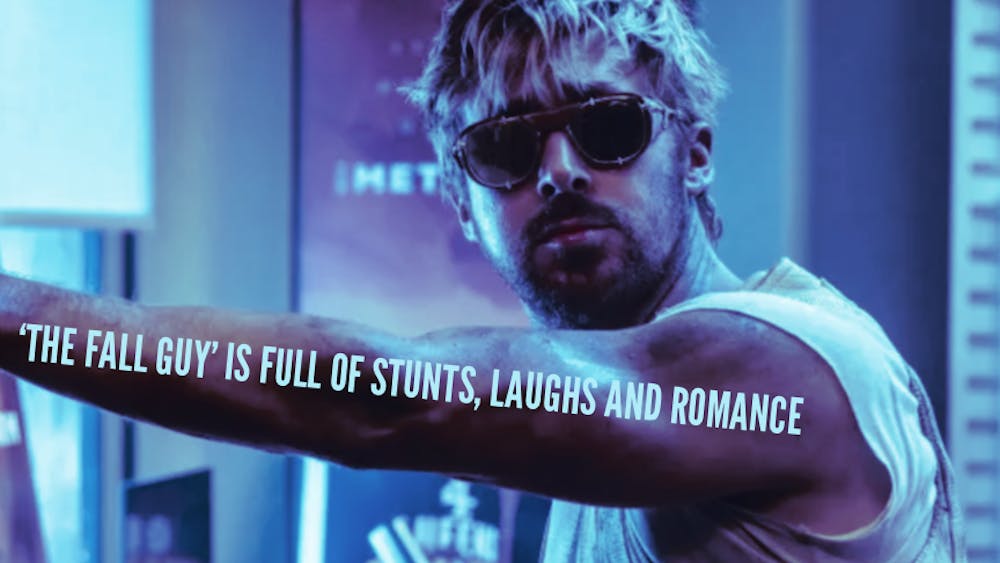
For two decades, Pixar has kept a hand on the marionette that is their audience’s emotions. At times, this hand was a heavy one. Despite seemingly large emotional payoffs, Pixar's efforts failed to arrive at any profound truth. Think of “Up,” with its dazzling opening sequence and debased third act. At its best, the studio exercised a delicate touch, creating moments that yielded true catharsis, as the emotional tidal wave that crashed upon the audience perfectly coalesced with some deeper meaning. The denouement of “Toy Story 3” comes to mind.
Perhaps, then, the genius of “Inside Out” is that it could never have failed to achieve this beautiful lockstep between our emotions and meaning because, well, the whole movie is an examination of our emotions. The sadness that comes with the death of a beloved character could never feel like a cheap shot in a film that passionately argues for the primacy of sadness in the human experience.
“Inside Out,” which will play in DeBartolo 101 Thursday through Saturday, is very much a coming-of-age story, though not in the typical sense. Whereas most coming-of-age stories see their characters achieve independence (think of Cameron Frye kicking his father’s vintage Ferrari out the window in “Ferris Bueller’s Day Off”), “Inside Out” examines the importance of dependence. Joy believes she can keep Riley’s mind in ship shape on her own, but she can’t. Riley believes an act of defiance is the best solution to her problems, but it isn’t. And they both believe the best — scratch that — the only way to function is without sadness/Sadness (that’s little s for the emotion and big S for the character, who is an emotion. Don’t worry, it’s not a confusing movie). It is not surprising that Joy resorts to confining Sadness to a small circle, far from Riley’s important mental machinery, especially after Riley’s misguided mother asks her to smile to benefit her stressed-out dad. Joy, and therefore Riley, are not yet at the age where they can digest all the nuances of emotion. To them, if you’re not 100 percent happy, then you must be 100 percent sad (notice, all of Riley’s happy memory orbs are 100 percent yellow, her sad memory orbs 100 percent blue. We adults can expect this to change by the end of the film). So the only course of action is to renounce sadness/Sadness.
No matter how much we may want to, we cannot live entirely independent of sadness. We cannot live in eternal joy. Why? Wouldn’t this be better? No (obviously), because as Joy learned in the dark recesses of Riley’s mind, our human experiences are often a mixed bag. We depend on the multitudinous combinations of our emotions to help us make sense of the multitude of events life throws at us. In learning the importance of sadness, Riley and Joy ultimately learned that life is bittersweet.
I’m really just scratching the surface here. And oh, that surface! If the last three paragraphs were a giant pill of meaning that needed to be swallowed, then the surface of that pill, of Pixar’s latest confection, is as sweet as an Everlasting Gobstopper. The humor, like the premise, is some of the cleverest the studio has produced. I first saw “Inside Out” opening night, surrounded by small children, and I wish the Student Union Board (SUB) could rent a couple dozen 6-year-olds for this week’s screenings. Only surrounded by small children who will laugh hysterically at some of the sillier gags can you appreciate the complexity of a comedy that appeals to kids from two to 92. Yes, I giggled at some of the childish sight gags, but I howled at the adult jokes. In fact, a certain quip about bears is probably my favorite joke from the entire Pixar canon. After a depressing stretch of failures — “Brave,” “Monsters University” and the abominable “Cars 2” — it’s good to be having fun at a Pixar movie again.
Visually, “Inside Out” is a treat (duh). It’s not quite as pretty as “Finding Nemo,” and because it mostly lacks subject matter that is grounded in reality, it’s not as startlingly impressive as “WALL-E” or “Ratatouille” (which is underrated in every regard). But hey, few films are. The pit of doom/memory dump is frighteningly cavernous, and all of those little memory orbs look — and sound — fantastic. Director Pete Docter wisely includes a handful of super-wide shots to give his audience a sense of the mind’s expanse. Even though all these shots are animated, their sheer scope tickled me in the same way David Lean’s desert compositions in “Lawrence of Arabia” did.
“Inside Out” will play in Debartolo 101 this Thursday through Saturday. SUB is sponsoring the screenings, and student tickets are $3.













